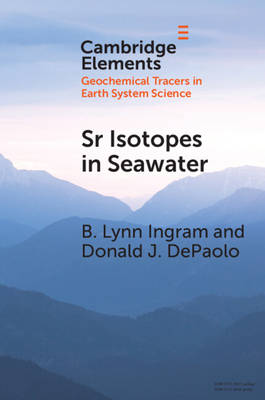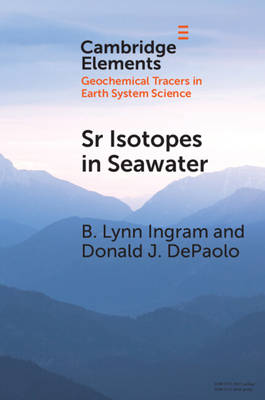
- Afhalen na 1 uur in een winkel met voorraad
- Gratis thuislevering in België vanaf € 30
- Ruim aanbod met 7 miljoen producten
- Afhalen na 1 uur in een winkel met voorraad
- Gratis thuislevering in België vanaf € 30
- Ruim aanbod met 7 miljoen producten
Zoeken
Sr Isotopes in Seawater
Stratigraphy, Paleo-Tectonics, Paleoclimate, and Paleoceanography
B Lynn Ingram, Donald J DePaolo
€ 31,95
+ 63 punten
Omschrijving
Studies of Sr isotopic composition of thousands of samples of marine sediments and fossils have yielded a curve of 87Sr/86Sr versus age for seawater Sr that extends back to 1 billion years. The ratio has fluctuated with large amplitude during this time period, and because the ratio is always uniform in the oceans globally at any one time, it is useful as a stratigraphic correlation and age-dating tool. The ratio also appears to reflect major tectonic and climatic events in Earth history and hence provides clues as to the causes, timing, and consequences of those events. The seawater 87Sr/86Sr ratio is generally high during periods marked by continent-continent collisions, and lower when continental topography is subdued, and seafloor generation rates are high. There is evidence that major shifts in the seawater ratio can be ascribed to specific orogenic events and correlate with large shifts in global climate.
Specificaties
Betrokkenen
- Auteur(s):
- Uitgeverij:
Inhoud
- Aantal bladzijden:
- 32
- Taal:
- Engels
- Reeks:
Eigenschappen
- Productcode (EAN):
- 9781108994293
- Verschijningsdatum:
- 31/03/2022
- Uitvoering:
- Paperback
- Formaat:
- Trade paperback (VS)
- Afmetingen:
- 152 mm x 229 mm
- Gewicht:
- 58 g

Alleen bij Standaard Boekhandel
+ 63 punten op je klantenkaart van Standaard Boekhandel
Beoordelingen
We publiceren alleen reviews die voldoen aan de voorwaarden voor reviews. Bekijk onze voorwaarden voor reviews.











